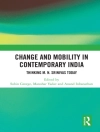Accessibly written and presented, Changing Violent Men is based on the authors′ evaluation research of various criminal justice responses and treatment programs for men who use violence against a woman partner. It seeks to answer the questions ‘What, if anything, works and why?’
In examining the effectiveness of two court-mandated abuser programs, compared with more traditional justice sanctions such as fines, probation, and others, the authors provide:
- Detailed descriptions of the nature of violence
- Considerations of interventions with violent men, particularly abuser programs
- A focus on whether violent men can change
- Theorizing about the process of personal change among those men who do change their behavior
Both qualitative and quantitative data are used to delineate the patterns of violence and personal change and to give a voice to men as well as women speaking about their relationships, about the impact of various criminal justice interventions and about changes in their lives. Although the programs evaluated are in the United Kingdom, they are modeled on programs in the United States, so the book will have wide appeal to advanced students and practitioners in the United States, the United Kingdom, and around the world.
Table of Content
PART ONE: FOCUSING ON MEN′S VIOLENCE AND THE PROCESS OF CHANGE
Responding to Abused Women
‘Domestic Violence’ Is Asymmetrical
The Transformative Project
The ‘Fit’
PART TWO: MEN TALKING ABOUT VIOLENCE
The Violence
Effects of Violence
Sources of Conflict
The Context of Violence
PART THREE: INTERVENTION FOR CHANGE: RESPONDING VIOLENT MEN
The Justice System
Programs for Abusers
The Research Sites
Women Partners
PART FOUR: METHODS FOR EVALUATING PROGRAMS FOR VIOLENT MEN
Violence and Personal Change
Issues in Evaluation Research
Evaluating Programs for Violent Men
The Violent Men Study
The Constellation of Violence
Data Collection
PART FIVE: THE CONTEXT OF INTERVENTION: VIOLENCE AND VIOLENT RELATIONSHIPS
The Relationships
Previous Violence, Injuries, and Controlling Behaviour
Reactions to Violence
Contacts With Others
The Violent Event Leading to Conviction and Inclusion in the Study
PART SIX: CAN VIOLENT MEN CHANGE?
Program Integrity and Evaluative Criteria
Investigating Selection Bias – Comparisons of the Groups
Do Violent Men Change?
PART SEVEN: CHANGES IN QUALITY OF LIFE
Assessing the Quality of Life
Changes in Men′s Orientations to Violence
Changes in Men′s Related Behaviors and Emotional Well-being
Changes in Men′s Orientations to Their Woman Partner
Changes in Women′s Quality of Life and Sense of Well-Being
Changes in the Relationship
Reducing Conflicts
Safety and Anger
Summary
PART EIGHT: WHY MEN CHANGE
Spontaneous Reflections About Change
Three Stories of Change
The Process of Change
The Sustainability of Change
PART NINE: THE CHALLENGE












